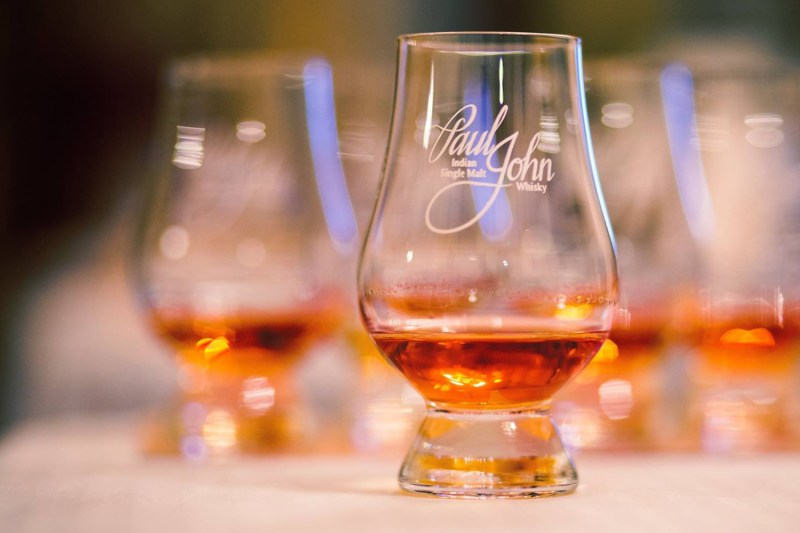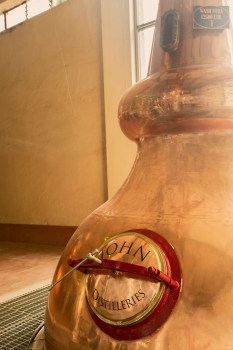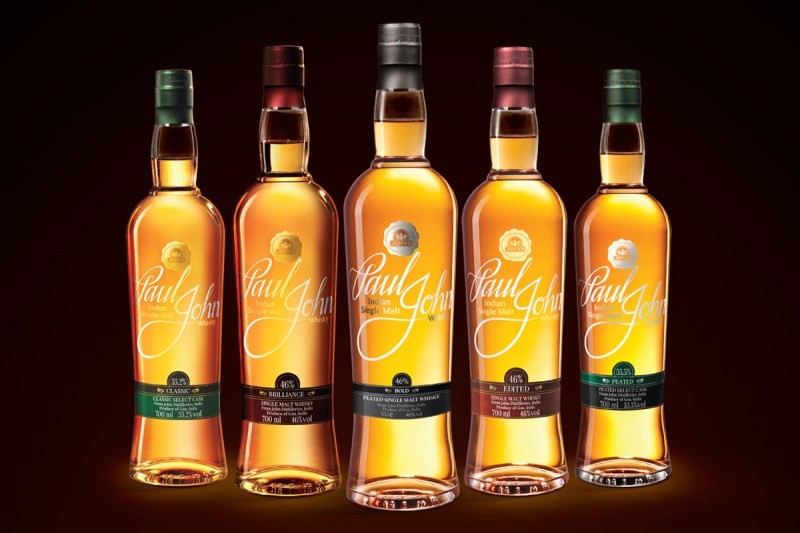When it comes to the wide world of whisky, most drinkers can name off the major whisky-producing countries as easily as you could the players on your favorite football team. What you may not know is that India has been consuming and producing whisky a ton of whisky for quite a while.
Just how much? According to the group International Wine and Spirits Research, 193.1 million nine-liter cases of whisky were consumed in India in 2016 (98.24 percent of which was made in India). Globally, 399.2 million cases were consumed in 2016, meaning that India drank just under half of the world’s whisky.
With that staggering number now bouncing around your brain, let’s dig into how the Indian whisky sector got there and why you should be paying attention to it (before it’s too late, as it is with many Japanese age statement whiskies).

A Brief History of Whisky in India
Whisky first appeared in India during the British Colonial period (the early 1800s), when the Europeans brought their whiskies (and their India Pale Ales, of course) with them to the country. This led to the establishment of the first brewery in India, which later became the first distillery.
The thing is, a lot of what was produced in the country and was being labeled as whisky wasn’t technically whisky, at least according to European or American standards. Due to food and grain shortages, though, “whisky” was made with a blend of neutral spirits and fermented molasses — what would be identified rum almost everywhere else.
Indian Whisky Today
It wasn’t until the 1980s that a single malt distillery was established. Amrut, the first single malt distillery in India, began producing single malt whiskies from Indian barley, then mixing it with other alcohol before selling it. In 1992, John Distilleries was established, following a similar pattern. As the global market continued to grow and evolve, both distilleries made the move to producing single malt whiskies — Amrut in 2004 and John Distilleries in 2008.
To find out more about Indian single malt whiskies, we sat down with John Distilleries’ master distiller, Michael D’Souza. For the brand’s Paul John whiskies, he says the team uses six-row barley from the foothills of the Himalayas. The higher protein and enzyme content of the barley helps to give the whisky more body and character. They then double-distill in specially designed copper pot stills that were made in India. When it comes times to age the spirit, D’Souza says that India’s climate helps the process greatly.
“The ideal warm weather of coastal Goa helps our whiskies mature faster, unlike those produced in colder climates. Thus every step of the process, from germination to malting and peating, enhances the distinct flavors of our unique whiskies placing them in a niche of their own,” D’Souza says.
Currently, there are five expressions from the brand available in the United States: Brilliance, Edited, Bold, Select Cask Classic, and Select Cask Peated. All of the expressions, D’Souza says, are aged a minimum of six years and some up to eight; they don’t rest longer due to the tropical climate and the accelerated aging process.

And what do the whiskies taste like?
Let’s start with one of the brand’s three flagships, Brilliance. Cinnamon, spice, honey and, demerara sugar on the nose lead to a spicy, honeyed palate. Hints of cocoa lead into a strong yet smooth vanilla finish.
For the peated flagship, Edited, you’ll find smells of coffee and smoke with some hints of honey and cocoa. The peat is subtle on the palate behind cocoa and mint flavors, which follow through to the finish.
Their final flagship, Bold, is sweet and spicy on the nose as well, this time with honey and licorice dominating the profile. The palate is smooth, with spice notes coming through from beginning to end, with a little bit of smoke and a hint of metallic tang. The finish is light, with cocoa and spice flavors.

D’Souza says that the whiskies speak to a larger audience — not just those looking to try an Indian whisky for the first time, but those looking to experience something more. “We would like to say our [whisky] is not just a gateway to learn about other Indian whiskies, but a gateway to understand and know that a good single malt whisky can be made anywhere in the world and that a whole new category of whisky is emerging outside traditional whisky-making countries.”
You can use John Distilleries’ store locator tool to find where you can get Paul John Single Malt Whisky near you.





